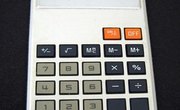Property taxes are a fact of life if you own your own home. It’s one of the expected expenses that new homeowners need to budget for when they consider taking the leap to buy a house. Perhaps you have heard the term used to "taxes paid in arrears." No one ever wants to be in arrears on a tax bill, so why would a homeowner pay property taxes in arrears? Well, it's not the same as being in arrears on your property taxes, which means you haven’t made your payments on time. Paying property taxes in arrears simply means that you are paying your bill for the year in the closing months of that same year.
Tips
When an individual pays property taxes in arrears, they are essentially paying a tax bill for the current year in the closing months of the year. Simply put, individuals are paying property taxes for a defined duration of time at the end of that time period.
Defining Property Taxes
Many municipalities in North America collect property taxes. Along with residential properties, this tax is levied on commercial properties and land. The amount of property tax collected for each category is determined by:
- The assessed value of the property
- The assessment ratio (portion of the assessed value that is taxable)
- The mill levy (rate municipality collects from your property)
The assessed value of the property is its market value and is determined by an assessor, who evaluates prices of similar homes, the cost of maintaining the home and the replacement cost. The assessed value of a home can move up and down with changes in the local market. A state may use the purchase price of the property to determine its assessed value, although this is rare. Once the assessed value has been determined, the government uses a set percentage of the assessed value (or another formula) to calculate the property taxes that are owed.
For states using a percentage of the assessed value, the assessment ratio ranges from 1 to 100 percent. Many states only use a portion of a home’s value when determining the amount of property tax its owners will pay. In a state that relies on a home’s full market value for property tax purposes, the assessment ratio is 100 percent.
Understanding the Mill Levy and Funding Uses
The mill levy is the tax rate used for your property. The city, county and school district all collect taxes from property owners within their boundaries. Each one calculates the mill rate separately. All three percentage rates are added together to determine the total mill rate for the region.
Property taxes are a significant source of funding for local governments. A number of municipalities set a budget to meet their costs, and then determine the tax rate accordingly. The money collected is used to pay for services provided at the local level, such as public schools, police and firefighting services, garbage collection, public transportation, recreation and libraries.
Defining Payments in Arrears
Depending on where you live, you may not be paying your property taxes as you “use” the services your municipality provides. Instead, your locality will send you a bill for your property taxes for several months “in arrears.” In order to define arrears, here is a quick example.
If you receive a tax bill for taxes for January-June 2017, you are really being billed for the tax expense of January-June 2016. When you receive a tax bill for July-December 2017, you are paying taxes for July-December 2016 (one year prior).
This practice is similar to going to a restaurant for a meal: you order your food and eat it before you are presented with a check for payment. In the case of your property taxes, you are billed every six months for the services your municipality has already provided.
Paying your Property Taxes with your Mortgage
Your lender may collect a property tax payment along with your regular mortgage payment. The property tax portion is placed in an escrow account and is used to pay your property tax bill when it comes due. The municipality doesn't receive your tax payment early when you use this method; it is offered as a convenience by your lender so that you can avoid a large tax bill. Therefore, your lender is also paying from your account in arrears even though you don't see this payment being made.
References
- Urban-Brookings Tax Policy Center: RESIDENTIAL PROPERTY TAXES IN THE UNITED STATES
- U.S. Department of the Treasury: State and Local Taxes
- Property Tax
- Credit.com Property Taxes & Your Mortgage
- State of Connecticut, Office of Policy and Management. "Mill Rates." Accessed Jan. 22, 2020.
- Maine Revenue Service, Department of Administrative and Financial Services. "Homestead Exemption FAQ." Accessed Jan. 22, 2020.
Writer Bio
Jodee Redmond is a freelance writer, blogger and editor who has been working full-time for over 15 years. She is a graduate of Centennial College and has worked as a tax consultant and a legal assistant. Her previous experience and boundless curiosity is a distinct advantage when writing about such varied topics as income tax, insurance, commercial property, business, construction, addiction, freelance writing and more.
